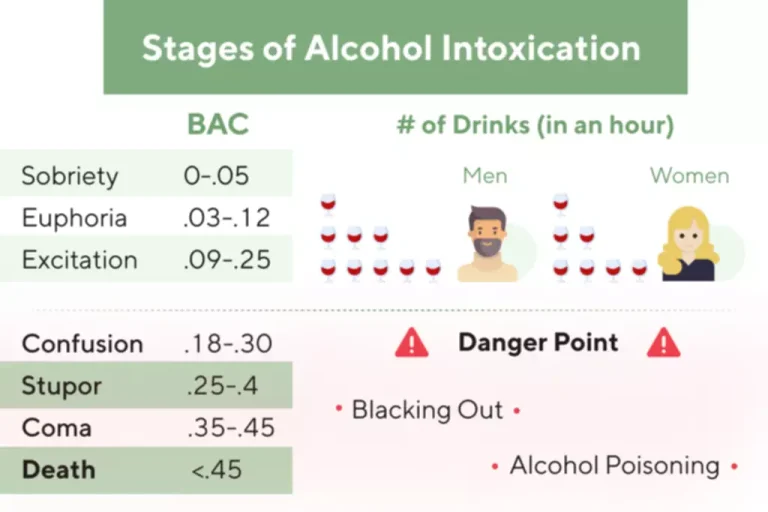
No matter what type of tolerance you may have developed, you want to be very thoughtful about how you proceed. Each type of tolerance is likely to lead to an increase in alcohol consumption and amplify your risks for developing dependence, organ damage, problems with completing tasks, and ultimately addiction. You can determine if you have alcohol tolerance by evaluating how much alcohol it takes for you to feel the same effects compared to when you first started drinking. If you realize that you have been drinking increasingly greater amounts of alcohol to get the same buzz that you once did, then you have developed a tolerance for alcohol.
Alcohol and non-alcohol episodes: AUD+ group by DEP status.
For instance, if you drank five beers — one beer per night, five days per week — you would have a lesser tolerance compared to someone drinking five beers in one night, once per week. Drinking habits greatly affect the level of tolerance in any given person. Additionally, medications can cause extreme sensitivity to alcohol’s effects, especially those used to treat anxiety and even attention deficit disorder (ADD). Perhaps you felt that energy drinks or coffee got you back to functioning sooner.
Tolerance to alcohol: A critical yet understudied factor in alcohol addiction
It’s no secret that one of the side effects of drinking alcohol is a feeling of happiness, and while the majority of UW-Madison students don’t engage in high-risk drinking, many still believe that quantity is the secret to achieving that feeling. Addiction indicates the need for formal substance abuse treatment to achieve a full recovery. Fortunately, there are many steps you can take to prevent addiction from taking hold. A reset is a recommended practice, particularly at places like universities where students may feel their drinking is getting out of hand and creating health problems, mental health issues, and other health risks. Alcohol tolerance, for the most part, is something that you develop over the course of your experience with alcohol. How quickly you lose tolerance when you quit alcohol consumption may depend on several factors.
Public Health
According to the Centers for Disease Control and Prevention (CDC), the 2020–2025 Dietary Guidelines for Americans recommends that adults of legal drinking age may choose not to consume alcohol or that they drink in moderation. This involves limiting consumption to two drinks or fewer per day for males or one drink or fewer per day for females. Reducing intake or stopping drinking may help a person feel more in control of their consumption and avoid experiencing a reaction or symptoms related to their alcohol use. In addition, older adults also experience a change in their renal function and balance of water and sodium, which raises their risk of dehydration. This suggests that if they drink alcohol, they may become dehydrated quicker and feel the effects more. Alcohol intolerance may cause a person to experience immediate reactions after they drink alcohol, or they may develop it hours after, the day after, or even later in life.

Find A Drug And Alcohol Rehab Center Near You
This article looks at the links between alcohol and sickness and provides an overview of alcohol intolerance, including the signs, when to consult a doctor, and causes. Finally, it examines how alcohol tolerance changes over time and offers support alcoholism treatment and guidance on alcohol use. If you’re concerned, talk to a healthcare professional about safe drinking strategies. The relationship between alcohol use and mental health is complex and bidirectional. High tolerance and increased consumption can exacerbate existing mental health conditions or trigger new ones.
- Improperly home canned, preserved, or fermented foods usually provide these conditions, per the CDC.
- If you need help dealing with alcoholism treatment or withdrawal symptoms, talk to a health professional immediately.
- For people of various ethnicities, genetic differences mean differences in AT levels.

Environmental factors, personal choices, and other genetic influences all play roles in determining an individual’s relationship with alcohol. Children of alcoholics, for instance, often display higher tolerance to alcohol’s effects. This hereditary component is complex and involves multiple genes that affect both metabolism and neurological responses to alcohol. These age-related changes mean that older adults may experience the effects of alcohol more strongly, even if they’ve maintained the same drinking habits for years. Alcohol tolerance refers to the bodily responses to the functional effects of ethanol.
How alcohol affects men and women’s bodies differently

Male Wistar rats developed tolerance to a second dose of 24 h after the first dose, reflected by a decrease in extracellular serotonin levels in the ventral hippocampus (Bare et al., 1998). However, male alcohol-preferring rats exhibited a similar magnitude of the increase in extracellular serotonin levels in the ventral hippocampus following both lower alcohol tolerance the first and second doses (Thielen et al., 2002). L-tryptophan is the precursor of 5-hydroxytryptaminne (5-HT; serotonin) and increases 5-HT levels in the brain.
Causes of alcohol intolerance
This includes direct tolerance, speed of recovery from insobriety and resistance to the development of alcohol use disorder. In some cases, tolerance may already be a sign of alcohol use disorder. It suggests unhealthy drinking behavior, causing you to develop tolerance. Meanwhile, people with high tolerance are more resistant to alcohol’s effects. When alcohol-dependent people reduce their intake, they experience intense cravings and withdrawal symptoms. This blog discusses what alcohol tolerance is, its causes, and how to reduce your tolerance level.

Studies have found that women get drunk faster and feel stronger effects than men. This is because they have smaller bodies and a higher proportion of fat than men, so their bodies need fewer drinks to induce insobriety. Some people have slower variants of these enzymes, which has been linked to tolerance and dependence.
Estimated blood alcohol concentration (eBAC).

The angle at which the animal begins to slide is used as a measure of motor impairment. Pretreatment with alcohol in male rats did not cause rapid cross-tolerance to pentobarbital, but pretreatment with pentobarbital caused rapid cross-tolerance to alcohol (Khanna et al., 1991a). Male rats exhibited rapid cross-tolerance (hypothermia and tilt-plane) to the alcohols n-propanol, n-butanol, and t-butanol.
